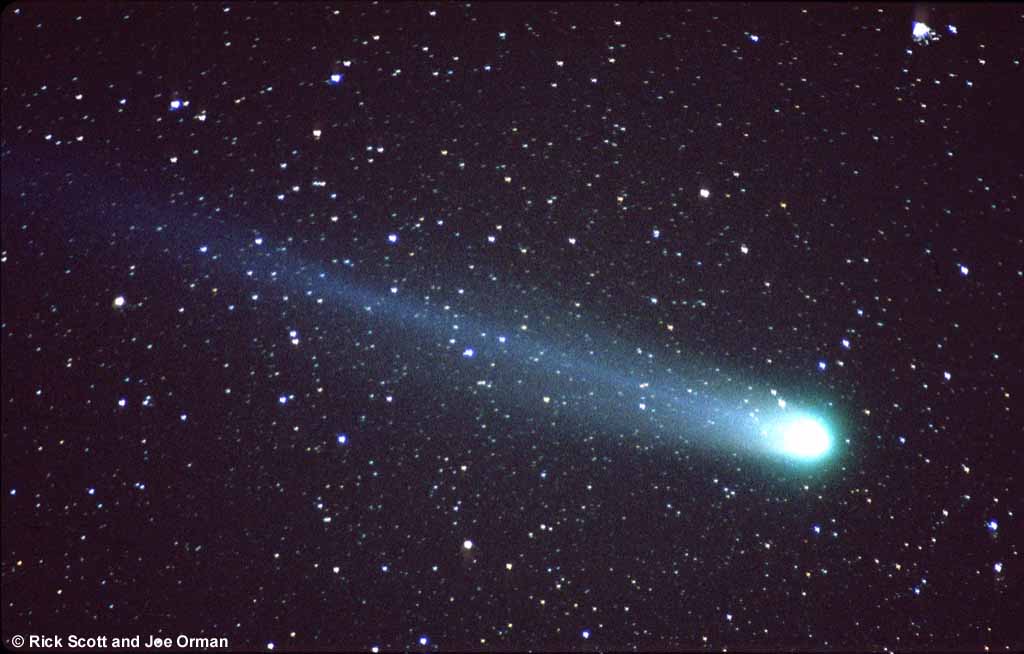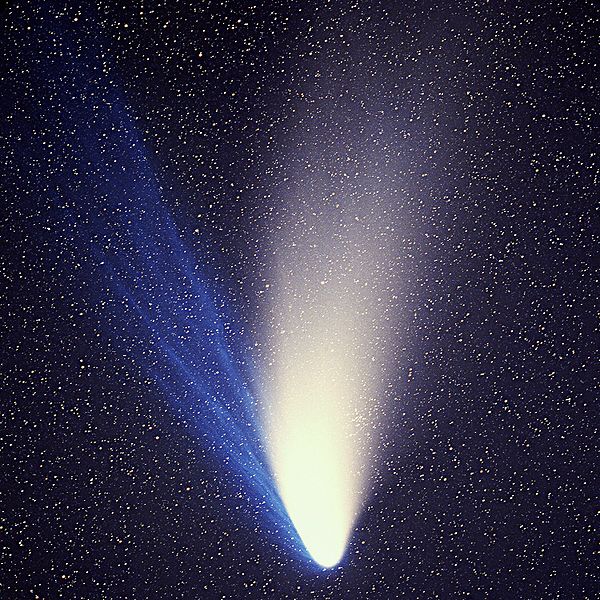Tool to Potentially Measure the Oort Cloud
Comets inspire a sense of awe in most people. I remember vividly witnessing the comet Hyakutake (pictured below on the left with comet Hale-Bopp on the right) as it passed through the inner solar system in 1996. My graduate research took me to southern Arizona where pristine skies made it possible to see the tail of comet Hyakutake stretch more than half way from horizon to horizon. Along with the more familiar Halley’s comet, these marvelous objects make beautiful images, but also cause problems for astronomers.


Current scientific investigations place the age of the solar system around 4.5 billion years. Yet, any given comet that passes close to the Sun on a regular basis will disintegrate on a much shorter time-scale. So, why do we still see comets? The conventional answer is that a large reservoir of comet-sized material left over from the solar system’s formation resides in the outer recesses of the solar system—far beyond Pluto’s orbit. Astronomers refer to this hypothesized reservoir as the Oort cloud. Interactions with other bodies in the Oort cloud and with nearby stars sometimes hurl a comet into the inner solar system where it loops around the Sun until it evaporates. If the Oort cloud exists, it naturally explains why we still see comets today.
Currently, scant observational evidence supports this explanation. In fact, most prominent young-earth creationist organizations utilize this paucity of evidence and the existence of comets as a prime argument for a young earth (for examples, see these two articles from Answers in Genesis and one from the Institute for Creation Research).
The main difficulty in finding evidence for (or against) the Oort cloud stems from the distance of the Oort cloud from the Sun. Most of the Oort cloud objects will be relatively small—the size of Pluto or smaller. If, as proposed, the Oort cloud resides nearly a light-year away from the Sun, the objects comprising the cloud reflect too little light for even the most powerful telescopes to detect. However, a study published in the Astrophysical Journal indicates that detection of the Oort cloud may lie just around the corner. Rather than looking for reflected sunlight, the new method searches for gamma rays.
A steady and relentless shower of cosmic rays bombards the solar system from all directions. As those cosmic rays interact with the small rocks, dust, and grains in the Oort cloud, they produce gamma rays. According to the published study, the recently launched Fermi Gamma-ray Space Telescope should be able to detect these gamma rays, although it may take up to five years to acquire enough data. In fact, the number and distribution of observed gamma rays will determine how much material exists in the outer solar system and whether it can supply comets over the solar system’s lifetime. Thus, data from this telescope has the potential to falsify or validate a key component of models that posit a 4.5-billion-year-old Earth.
Detecting the Oort cloud would corroborate RTB’s cosmic creation model. But although such a positive result would not invalidate young-earth models, it would refute two claims made by young-earth creationists. First, it would demonstrate the scientific validity of postulating explanations that currently reside beyond our limit to detect (see the second article referenced above). Second, it would remove one of the prominent arguments used by young-earth creationists to claim that Earth cannot be billions of years old. RTB expects a detection of the Oort cloud and the consequent support of its already well-tested cosmic creation model.




